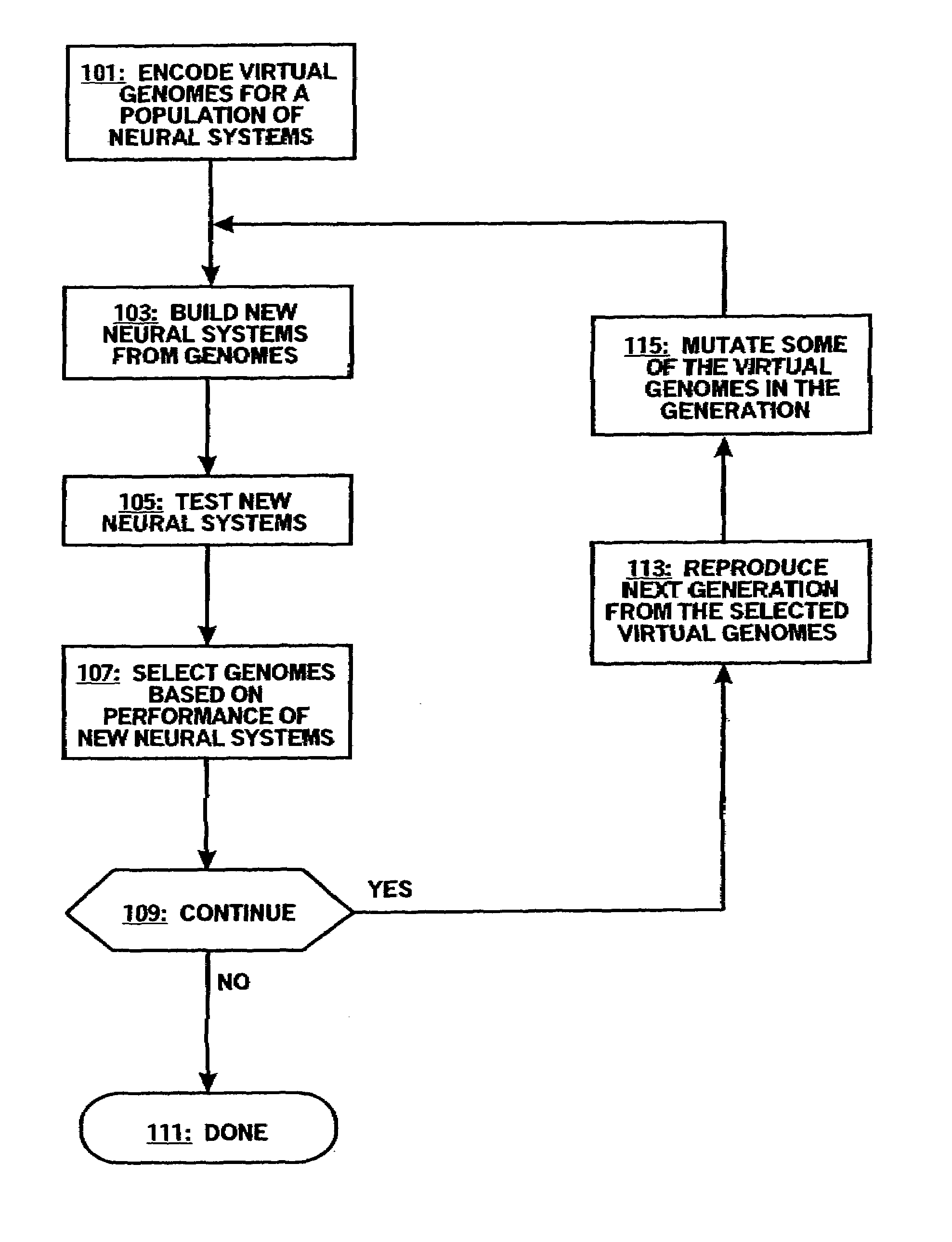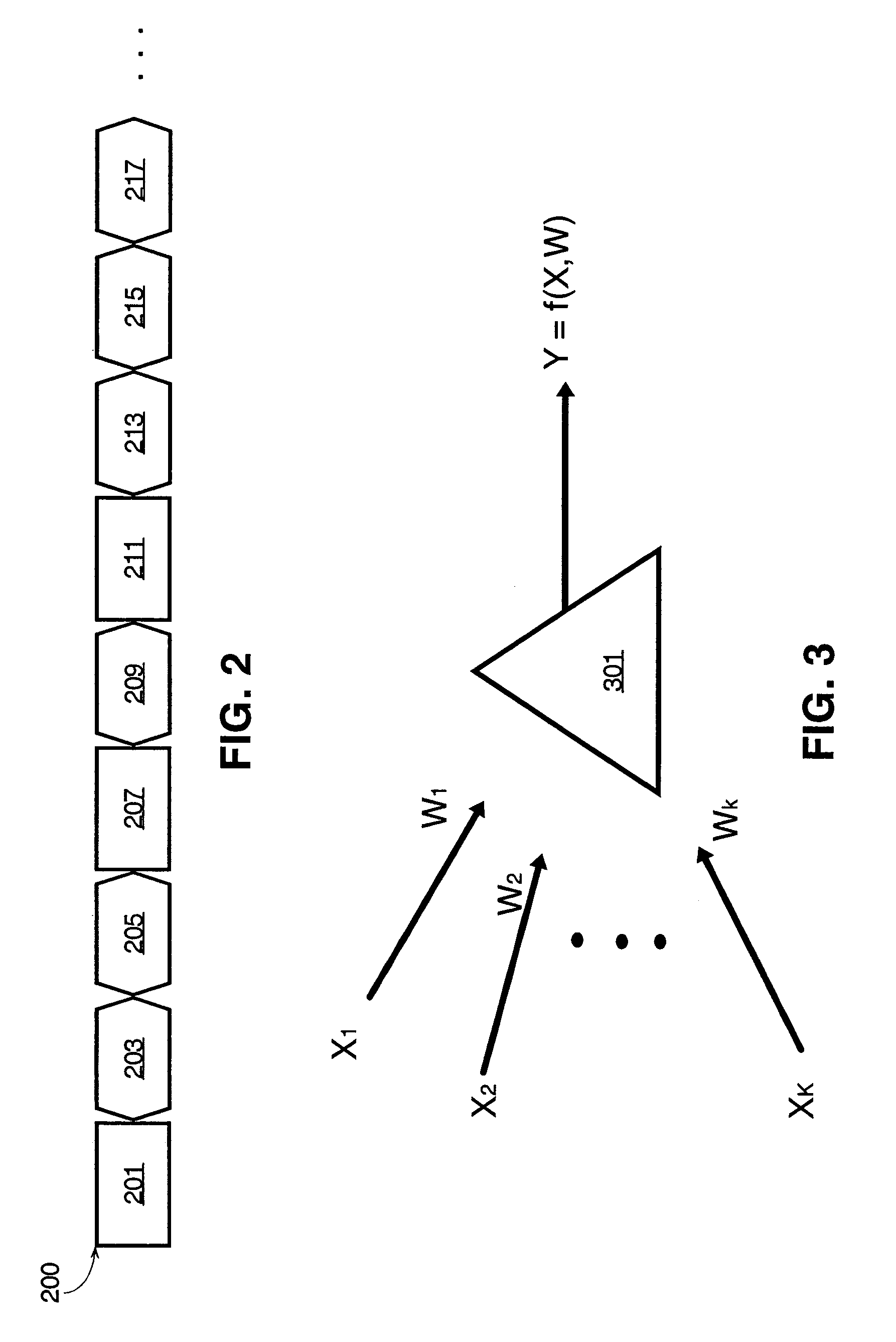System and method for developing artificial intelligence
a technology of artificial intelligence and system, applied in the field of artificial intelligence, can solve the problems of not being considered intelligent so much as autistic, programming computers to mimic a particular task, and the inability to achieve genuine artificial intelligen
- Summary
- Abstract
- Description
- Claims
- Application Information
AI Technical Summary
Benefits of technology
Problems solved by technology
Method used
Image
Examples
Embodiment Construction
[0039]A system, method, and software for developing artificial intelligence are described. In the following description, for the purposes of explanation, numerous specific details are set forth in order to provide a thorough understanding of the present invention. It is apparent, however, to one skilled in the art that the present invention may be practiced without these specific details or with an equivalent arrangement. In other instances, well-known structures and devices are shown in block diagram form in order to avoid unnecessarily obscuring the present invention.
[0040]I. Virtual Evolution
[0041]The quest for artificial intelligence is not a mirage: genuine intelligence has been produced once, by evolution. While the understanding of the mechanisms underlying intelligence is still in its infancy, comprehension of the mechanisms underlying evolution—mutation, selection, and reproduction—is as mature as any other field of science. Accordingly, one aspect of the invention relates ...
PUM
 Login to View More
Login to View More Abstract
Description
Claims
Application Information
 Login to View More
Login to View More - R&D
- Intellectual Property
- Life Sciences
- Materials
- Tech Scout
- Unparalleled Data Quality
- Higher Quality Content
- 60% Fewer Hallucinations
Browse by: Latest US Patents, China's latest patents, Technical Efficacy Thesaurus, Application Domain, Technology Topic, Popular Technical Reports.
© 2025 PatSnap. All rights reserved.Legal|Privacy policy|Modern Slavery Act Transparency Statement|Sitemap|About US| Contact US: help@patsnap.com



